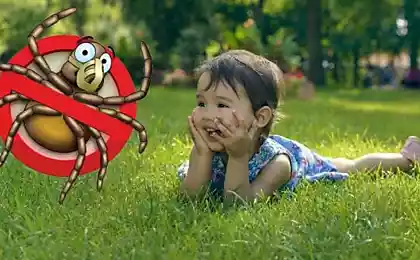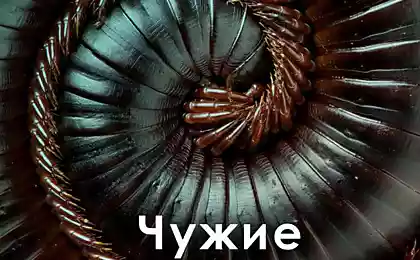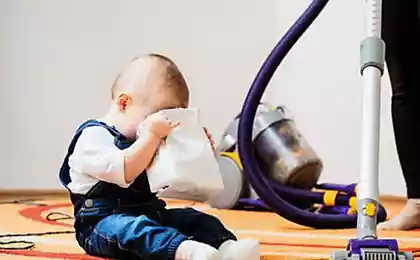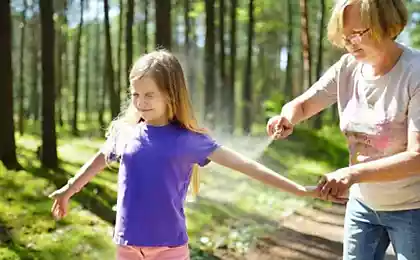756
How to protect yourself from ticks
Tick - a very small creature that catches terror to everyone who goes into the woods. In this article, you find out who he is, what is dangerous to people and how to protect yourself from it.
Just one word "Tick" can scare anyone who goes into the woods for the first time, especially those who had heard plenty of advertising on TV, looked the statistics of deaths from this little creature. Everyone has seen the signs "Caution mites," but that's who he is, and what it eats - we are now analyze
Let us turn to Wikipedia:
Mites - a subclass of the class of arthropods arachnids. The largest group in the class: currently more than 48,000 described species. This flourishing mites reached due to the fact that in its historical development they have acquired a microscopically small size, allowing them to master the upper layers of the soil, rich in decaying plant residues.
From the description you realize that this is a very small animal, like a spider. The species are many and describe each no sense to me as precisely as they live, where a lot of vegetation.

How dangerous tick
Tick - blood-sucking insects, dangerous for humans. In addition to the bite, the tick may serve as a carrier, and the causative agent of a number of infectious diseases such as tick-borne encephalitis or Lyme disease.
This is what we all encephalitis in kindergarten, school and university hammered.
But in fact, the probability of catch - not great. Even if you are bitten by a tick, it is not necessarily contagious, deadly. He can just drink krovinushku come and you are shouting :).
But there are cases. According to some reports each year in the hospital treated about 3,000 bitten and infected about 5-7% of the population of ticks, so do not ignore the elementary rules of protection and prevention.
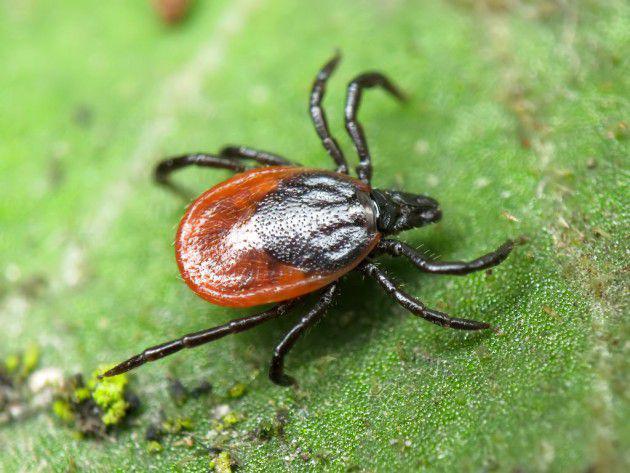
The period of activity of ticks
Ticks harmful. They do not like winter, the cold did not like, and activates the spring. With the advent of positive air temperature (+ 3 ° C and above) at last year's grass, in piles of firewood can find ticks.
In April you can meet these scoundrels, and then poison scary stories around the campfire. The most active period: May - June. Solitary can be found by the beginning of autumn. There are cases of infection in October and November even!
It is necessary to comply with the measures of personal prophylaxis to all those who visit the forest, or works there, because to pick up a tick easier.

Inhabited by ticks
The green areas, the more likely you will run into soil mites. They love to chew on plant residues, which can be so in the forest litter. Already in April, adult females begin to show activity and crawl on the hunt. For the normal maturation of the eggs they need high-calorie food - the blood of animals and humans.
Predators move the green bushes and waiting for its prey. They might take a fancy to the meadows and scrub, deforestation and forest edges. Most ticks happens in well-watered and moderately shady areas - among deciduous trees, ravines, lush herbage, young aspen, hazel and raspberry bushes. If there is a body of water, they are hiding in the coastal thickets.

How to protect yourself from ticks
1) Dress well. Summers are hot and want to remove yourself from everything, but if you do not want to catch - tight dress. Walk in closed shoes as well as dress pants. All zippers should be closed and it is desirable that the pants were made of tough fabric. T-shirts, tuck pants, throw with a hood on his head.
2) Regular inspection. Examines itself every 1-3 chasa.Poprosite friend that he looked at you for ticks, they can be anywhere. But more often they bite in the area with hairs cover. Skin folds, ears, axillary and inguinal part - the first thing to check.
3) Control examination. At home, when you arrive - check yourself completely. Myself and wash clothes better, in the sense of the shower go and throw things in the washing machine. It is better not to carry to the house, and leave it on the street, because the mites can jump from clothes to your house.
4) Use the chemicals. I recommend over the counter repellent chemicals called repellents. To protect people from blood-sucking arthropod repellents applied to exposed skin - face, neck and hands. Besides - Apply spray on clothing. A much better and longer will hold a repellent.

Just one word "Tick" can scare anyone who goes into the woods for the first time, especially those who had heard plenty of advertising on TV, looked the statistics of deaths from this little creature. Everyone has seen the signs "Caution mites," but that's who he is, and what it eats - we are now analyze
Let us turn to Wikipedia:
Mites - a subclass of the class of arthropods arachnids. The largest group in the class: currently more than 48,000 described species. This flourishing mites reached due to the fact that in its historical development they have acquired a microscopically small size, allowing them to master the upper layers of the soil, rich in decaying plant residues.
From the description you realize that this is a very small animal, like a spider. The species are many and describe each no sense to me as precisely as they live, where a lot of vegetation.

How dangerous tick
Tick - blood-sucking insects, dangerous for humans. In addition to the bite, the tick may serve as a carrier, and the causative agent of a number of infectious diseases such as tick-borne encephalitis or Lyme disease.
This is what we all encephalitis in kindergarten, school and university hammered.
But in fact, the probability of catch - not great. Even if you are bitten by a tick, it is not necessarily contagious, deadly. He can just drink krovinushku come and you are shouting :).
But there are cases. According to some reports each year in the hospital treated about 3,000 bitten and infected about 5-7% of the population of ticks, so do not ignore the elementary rules of protection and prevention.

The period of activity of ticks
Ticks harmful. They do not like winter, the cold did not like, and activates the spring. With the advent of positive air temperature (+ 3 ° C and above) at last year's grass, in piles of firewood can find ticks.
In April you can meet these scoundrels, and then poison scary stories around the campfire. The most active period: May - June. Solitary can be found by the beginning of autumn. There are cases of infection in October and November even!
It is necessary to comply with the measures of personal prophylaxis to all those who visit the forest, or works there, because to pick up a tick easier.

Inhabited by ticks
The green areas, the more likely you will run into soil mites. They love to chew on plant residues, which can be so in the forest litter. Already in April, adult females begin to show activity and crawl on the hunt. For the normal maturation of the eggs they need high-calorie food - the blood of animals and humans.
Predators move the green bushes and waiting for its prey. They might take a fancy to the meadows and scrub, deforestation and forest edges. Most ticks happens in well-watered and moderately shady areas - among deciduous trees, ravines, lush herbage, young aspen, hazel and raspberry bushes. If there is a body of water, they are hiding in the coastal thickets.

How to protect yourself from ticks
1) Dress well. Summers are hot and want to remove yourself from everything, but if you do not want to catch - tight dress. Walk in closed shoes as well as dress pants. All zippers should be closed and it is desirable that the pants were made of tough fabric. T-shirts, tuck pants, throw with a hood on his head.
2) Regular inspection. Examines itself every 1-3 chasa.Poprosite friend that he looked at you for ticks, they can be anywhere. But more often they bite in the area with hairs cover. Skin folds, ears, axillary and inguinal part - the first thing to check.
3) Control examination. At home, when you arrive - check yourself completely. Myself and wash clothes better, in the sense of the shower go and throw things in the washing machine. It is better not to carry to the house, and leave it on the street, because the mites can jump from clothes to your house.
4) Use the chemicals. I recommend over the counter repellent chemicals called repellents. To protect people from blood-sucking arthropod repellents applied to exposed skin - face, neck and hands. Besides - Apply spray on clothing. A much better and longer will hold a repellent.



